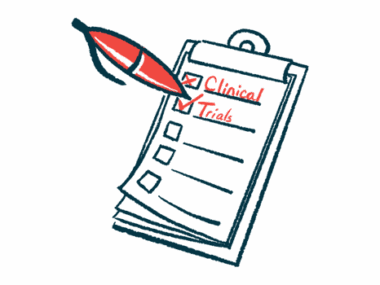Rinvoq found most effective for active AS, regardless of TNFi use
Rinvoq may be best for reducing disease activity when other options fail: Study
Written by |

Rinvoq (upadacitinib) appears to be the most effective treatment to reduce disease activity in people with ankylosing spondylitis (AS), whether they had never been on tumor necrosis factor inhibitors (TNFi) or didn’t respond well to them, a study suggests.
Because the observations come from indirect comparisons of data from randomized controlled trials, “head-to-head and real-world data comparisons are warranted to both validate these findings and aid medical decision makers,” researchers wrote.
The study, “Comparative Efficacy of Advanced Therapies in the Treatment of Radiographic Axial Spondyloarthritis or Ankylosing Spondylitis as Evaluated by the ASDAS Low Disease Activity Criteria,” was published in the journal Rheumatology and Therapy.
Axial spondyloarthritis mainly affects the joints along the spine and the sacroiliac joints, which connect the base of the spine to the pelvis, causing them to become inflamed and damaged. In AS, changes to the joints are visible on an X-ray.
There’s no cure for AS, but treatment is available to help relieve disease symptoms. Nonsteroidal anti-inflammatory drugs are the most commonly used medications, but more advanced treatment options may be prescribed if symptoms cannot be controlled well.
More than 50% of patients may have no response, loss of response to TNFi
While TNFi have been used as first-line advanced medications, “more than half of patients may experience non-response or loss of response,” the researchers wrote. In view of this, guidelines now recommend medications with other mechanisms of action.
As more advanced medications such as interleukin-17A inhibitors and Janus kinase inhibitors become available for AS, it’s important to compare how well these different treatment options work for different groups of patients.
The study explored this in two groups of patients: those who had never used TNFi, called TNFi-naïve, and those who were started on TNFi but found them ineffective or couldn’t tolerate them due to side effects.
The goal was to see which treatment was most effective in reducing disease activity between weeks 12 and 16, measured by the AS Disease Activity Score Low Disease Activity (ASDAS LDA), where a score of 2.1 or lower means low disease activity.
To do this, the researchers searched the literature for Phase 3 randomized controlled trials testing the efficacy of advanced medications in adults with active AS. They identified five, which they used for indirect comparisons between Rinvoq, Taltz (ixekizumab), adalimumab (marketed as Humira and biosimilars), and etanercept (sold as Enbrel and biosimilars).
Proportion of patients with reduced disease activity was highest with Rinvoq
For TNFi-naïve patients, any of the four medications outperformed a placebo at achieving ASDAS LDA. However, the proportion of patients who achieved this outcome was the highest with Rinvoq versus the placebo (52.8% vs. 11.6%).
Data for TNFi-resistant patients were available from SELECT-AXIS 2 (NCT04169373), which tested Rinvoq, and COAST-W (NCT02696798), which tested Taltz. An indirect comparison showed Rinvoq outperformed Taltz at achieving ASDAS LDA (41.3% vs. 17.5%).
These observations suggest Rinvoq, which works by inhibiting Janus kinases, a type of enzyme involved in setting up processes that lead to inflammation, may be the most effective for reducing disease activity when other options have failed.
“This analysis warrants updating to ensure the most current estimates of comparative clinical efficacy are available to aid medical decision makers in optimal treatment selection,” the researchers concluded, adding the analysis “also calls for validation.”







